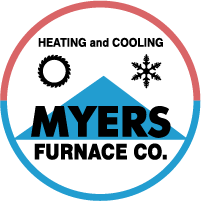
A furnace is often a background player in your home, helping keep you warm during the cold winter months. It regularly won't be noticed until something breaks down.
One source might be that your furnace has a cracked heat exchanger. It’s a potentially dangerous issue, so it’s critical to learn the symptoms of a cracked heat exchanger and what you can do if you are worried that might be the problem.
What Is a Heat Exchanger in a Furnace?
A heat exchanger transfers heat from the combustion chamber in your furnace to the air that moves inside the system. It typically handles this with coils or tubes that heat the air while functioning as a barrier to keep the gasses produced in the combustion chamber, called flue gasses, from escaping out into your home.
Is a Cracked Heat Exchanger Dangerous?
Because of its central role, it shouldn't come as a surprise that a cracked heat exchanger can be very dangerous. A damaged heat exchanger can permit dangerous gasses – like carbon monoxide, which can be lethal – to flow through your home.
For obvious reasons, do NOT turn on your heater if you believe you're dealing with a cracked heat exchanger, as doing so could make the entire family ill. Contact an HVAC professional immediately if you believe your furnace has a cracked heat exchanger that needs to be repaired.
Four Signs of a Cracked Heat Exchanger:
- Furnace switches off: A cracked heat exchanger could cause your furnace to turn off.
- Odd Smells: If the air leaving your furnace has a powerful chemical odor, it could be an indicator that gas is seeping through cracks in your heat exchanger. These byproducts, which will often smell like formaldehyde, are a significant warning sign.
- Carbon monoxide alarm goes off or you feel symptoms of poisoning: If a cracked heat exchanger is releasing carbon monoxide into your home, your carbon monoxide alarm may go off or household members might struggle with signs of carbon monoxide poisoning. Complications include headaches, dizziness, weakness, nausea, vomiting or feeling tired. If an alarm goes off or you feel unusually tired, get out of the home immediately and then call for help.
- Soot: If you notice black sooty buildup near the exterior of your furnace, it’s another sign something might be seriously wrong.
What to Do if a Furnace Heat Exchanger is Cracked
If you suspect your furnace has a cracked heat exchanger, hire a pro experienced in furnace installation Belton right away so they can inspect your system and, if needed, handle a furnace heat exchanger replacement. Costs will differ depending on the situation, but estimates can roughly suggest $1,000 to $3,000.
Estimates aside, the good news is that heat exchangers are regularly protected by the warranty. You’ll want to confirm the warranty paperwork on your furnace, because while the warranty won't always cover the entire cost of repairs, it could significantly lower your bill.
How to Avoid a Cracked Heat Exchanger in Your Home
One of the most convenient ways to minimize the risk of problems in your furnace overall is through regular furnace maintenance. Furnaces provide the best possible return on investment when they work efficiently. Hiring a trained professional to inspect your furnace for worn-out parts, clogs in the air filters and other likely problems can help you avoid getting a big bill later on.
It’s also beneficial to take a look at your furnace filters every few months – it’s ideal some filters be changed every 90 days or sooner if they are dirty or grimy. While the filters aren't a part of the heat exchanger itself, the strain of pulling air through a clogged filter makes the entire furnace work more vigorously to complete its job. And the harder your furnace needs to run, the more wear and tear parts like the heat exchanger will endure.
